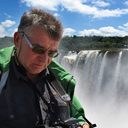1 Like
Rano Raraku is a volcanic crater formed of consolidated volcanic ash, or tuff, and located on the lower slopes of Terevaka in the Rapa Nui National Park on Easter Island. It was a quarry for about 500 years until the early eighteenth century, and supplied the stone from which about 95% of the island's known monolithic sculpture (Moai) were carved. Rano Raraku is a visual record of Moai design vocabulary and technological innovation, where 397 Moai remain. Rano Raraku is in the world heritage site of Rapa Nui National Park and gives its name to one of the seven sections of the park.
...





Rapa Nui is the most remote inhabited island on earth. You may recognize this place by its common title "Easter Island". The island pokes out of the ocean with one hundred fifty square miles of area, but this is only the tip of a giant extinct volcano rising ten thousand feet from the ocean floor.Easter Island got its Christian name on Easter Sunday in 1722, the day that Dutch explorer Jacob Roggeveen landed there. He found the natives in a primitive society engaged in constant war with each other, resorting to cannibalism at times of no other food being available. He was followed in 1770 by a Spanish captain who claimed the island for Spain, in 1774 by Captain Cook of England and in 1786 by a French admiral. The general lack of water, wood and food left them equally uninterested in using Easter Island as a place to resupply their ships.The mysteries of Rapa Nui are these -- how did people get here in the first place, how did they MAKE these gigantic statues, and then how a civilization could have degraded from such a cultural and artistic peak, backwards to a state of poverty and starvation?The standard tale of the people on Easter Island is that overpopulation and poor resource management led them to their own extinction. It's commonly used as a warning to the entire globe, telling all humans not to make the same mistakes on a planetary scale.Another version of the story might include the European introduction of smallpox, venereal disease, slavery and oppressive government as a warning to the entire globe, telling all humans not to make the same mistakes on a planetary scale.In any case, take another look at these images and be happy you have such a nice home planet to live on.Text by Steve Smith.